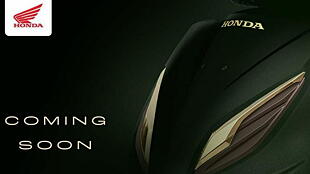Tata Coffee Grand Celebrates 'International Coffee Day'.
The morning news papers smelled with the flavour of coffee on the morning of 1st October 2024.
NOW SMELL THE COFFEE YOU HAVE BEEN HEARING ABOUT! was the slogan.
Tata Coffee Grand celebrates Tamil Nadu’s coffee heritage with new anthem: ‘The Shik Shik Shik Paatu’.
The new coffee anthem – The Shik Shik Shik Paatu is created by the celebrated Tamil composer Santhosh Narayanan featuring Dhee’s captivating vocals which bring alive the grand mornings of Tamil Nadu in all its glory.
The musical, brought to life by Lowe Lintas Bangalore, celebrates the authentic sights and smells of Tamil Nadu’s mornings across various landscapes that make each day truly grand!
The rhythmic splash of water in courtyards, the drawing of kolam, the distinctive chime of bharatanatyam anklets and thandatti earrings, the fishermen chants in the morning breeze, are all woven together melodiously, set to the beat of ‘Shik Shik Shik’ – the sound of Tata Coffee Grand. This groovy anthem invokes Tamil Nadu’s unmatched love for its morning cup of coffee.
The anthem blends together the rhythmic brilliance of Santhosh Narayanan’s composition with the uniquely powerful vocals of Dhee, marking their first collaboration with Tata Coffee. This contemporary take on Tamil Nadu’s authentic way of life is sure to be a treat for all lovers of music and coffee!
Puneet Das, President – Packaged Beverages, India & South Asia, Tata Consumer Products, said, “We are thrilled to partner with the iconic duo of Santhosh Narayanan and Dhee to bring forth this captivating coffee anthem, a melodious celebration of Tamil Nadu’s enduring love affair with its coffee. Music has the power to convey emotions and narrate stories, making this collaboration an innovatively impactful one to pay tribute to a state where every day feels like ‘Coffee Day’. An ode to a culture, its people, and their deep passion for their morning cup of coffee!
This memorable musical anthem is built around the signature ‘SHIK SHIK SHIK,’ sound of Tata Coffee Grand viz the sound of the flavor locked decoction crystals that is created by shaking the coffee pack.
Through music and memorable local visuals, we pay homage to a culture where every morning is fueled by Coffee. With Santhosh Narayanan’s soulful music and Dhee’s brilliant voice, we believe this song will stir the hearts of coffee fans across the region!” he further added.
Dhee said, “This was my first-ever brand partnership, and I couldn’t be more thrilled! I absolutely love how the song turned out, especially how it celebrates Tamil Nadu’s rich culture, sounds, and deep-rooted love for coffee. That connection is really special to me. I hope everyone enjoys listening to it as much as I enjoyed creating all the ‘Shik Shik Shik’ moments!”
Santhosh Narayanan said, “Creating this song for Tata Coffee Grand was an absolute joy! I especially loved weaving together the unique morning sounds of Tamil Nadu into one track. For me, it’s a true celebration of our culture, with coffee at the heart of it. I hope people fall in love with all the ‘Shik Shik Shiks’ and ‘Thilladis’ and keep playing it on repeat!”



















